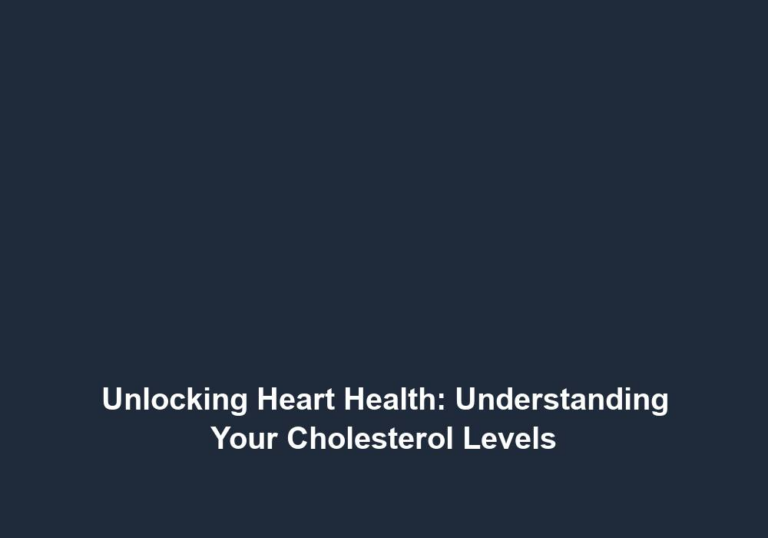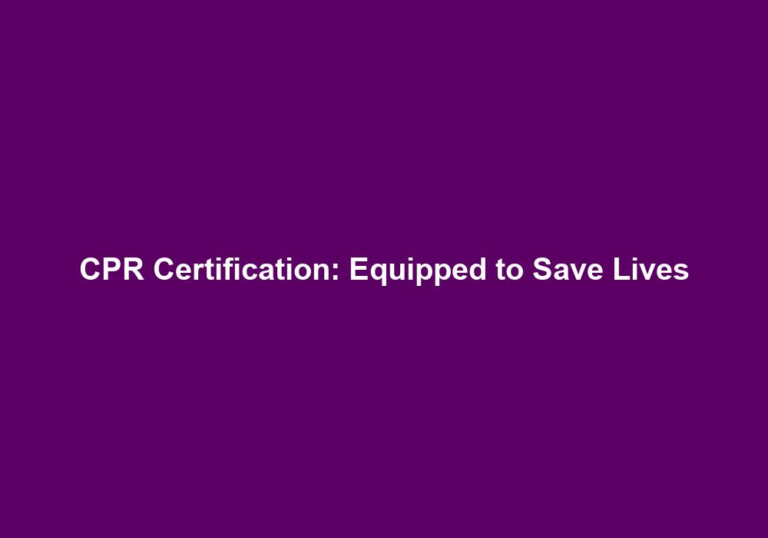MRI and Your Heart: Unlocking the Secrets Beneath
In recent years, medical advancements have revolutionized the way we diagnose and treat various health conditions. One such innovation that has significantly impacted the field of cardiology is the Magnetic Resonance Imaging (MRI) technology. By utilizing powerful magnetic fields and radio waves, an MRI machine can create detailed images of the heart, allowing doctors to uncover hidden secrets and gain valuable insights into its functioning. In this article, we will explore the fascinating world of MRI and its pivotal role in understanding the complexities of the human heart.
Understanding MRI Technology
MRI is a non-invasive imaging technique that employs a strong magnetic field and radio waves to generate highly detailed images of the body’s internal structures. Unlike X-rays or CT scans, which use ionizing radiation, MRI relies on the behavior of hydrogen atoms within the body to create images. These atoms, abundant in water molecules, align themselves with the magnetic field when exposed to it. When radio waves are then applied, they disrupt this alignment, causing the atoms to emit signals that can be detected by the MRI machine. These signals are then processed by a computer to construct detailed cross-sectional images of the heart.
MRI technology has revolutionized the field of cardiology by providing a highly accurate and detailed view of the heart’s structures and functions. The use of strong magnetic fields and radio waves allows for the visualization of the heart in multiple planes, providing cardiologists with a comprehensive understanding of its size, shape, and thickness. This information is vital for assessing the health of the heart and diagnosing various cardiac conditions.
Furthermore, MRI plays a crucial role in diagnosing heart conditions such as congenital heart defects, coronary artery disease, heart tumors, and heart muscle disorders. It enables cardiologists to identify abnormal blood flow patterns and evaluate the severity of blockages or narrowing in the arteries. By providing detailed images of the heart’s structure and function, MRI assists in monitoring treatment effectiveness, guiding surgical planning, and assessing the impact of a heart attack.
The Importance of MRI in Cardiology
MRI has emerged as an indispensable tool in the field of cardiology due to its ability to provide comprehensive information about the heart’s structure, function, and blood flow. Let’s explore some of the key reasons why MRI is highly valued in the cardiology community:
-
Detailed Assessment of Cardiac Structures: MRI offers exceptional image quality, allowing cardiologists to visualize fine details of the heart’s anatomy. The ability to obtain images in various planes facilitates accurate diagnosis and enhances the understanding of complex cardiac conditions. Cardiologists can assess the size, shape, and thickness of the heart’s chambers and walls, as well as evaluate the heart valves, blood vessels, and surrounding tissues.
-
Diagnosis of Cardiac Conditions: MRI plays a crucial role in diagnosing various heart conditions, including congenital heart defects, coronary artery disease, heart tumors, and heart muscle disorders. It aids in identifying abnormal blood flow patterns and evaluating the severity of blockages or narrowing in the arteries. This information is vital for determining the appropriate treatment plan.
-
Functional Assessment: In addition to assessing cardiac structure, MRI provides valuable information about the heart’s functioning. It enables the measurement of blood flow rates, cardiac output, and the efficiency of heart muscle contraction. This functional assessment aids in the detection of abnormalities that may not be apparent on other imaging modalities.
-
Versatility in Combination with Other Techniques: MRI can be combined with other imaging techniques to enhance diagnostic capabilities. For instance, by utilizing a contrast agent, doctors can improve the visualization of blood vessels and identify areas of reduced blood supply, aiding in the diagnosis of coronary artery disease. This versatility makes MRI a valuable tool in the comprehensive evaluation of cardiac health.
-
Patient Comfort and Safety: MRI technology has evolved significantly to prioritize patient comfort. Modern MRI machines have wider and more open bores, reducing feelings of claustrophobia and accommodating patients of various sizes. Additionally, advancements in imaging sequences have led to faster scan times, minimizing patient discomfort. Furthermore, MRI is a non-invasive and radiation-free imaging technique, making it a safer option, particularly for individuals who may be sensitive to radiation or require repeated imaging studies.
Preparing for a Cardiac MRI
Before undergoing a cardiac MRI, certain preparations may be necessary to ensure accurate results. These preparations may include:
-
Informing the Healthcare Provider: It is essential to provide your healthcare provider with comprehensive information about your medical history, including any allergies, existing medical conditions, or prior surgeries. This will help them determine the suitability of an MRI and take necessary precautions.
-
Discussing Medications: Inform your healthcare provider about any medications or supplements you are taking. Certain medications, such as those containing metal, may interfere with the MRI examination and need to be temporarily discontinued.
-
Removing Metal Objects: MRI utilizes powerful magnets, so it is crucial to remove all metal objects, including jewelry, watches, and clothing with metal fasteners, before the procedure.
-
Fasting: In some cases, fasting for a few hours prior to the MRI may be required, particularly if contrast agents will be used. Your healthcare provider will provide specific instructions regarding fasting if necessary.
Preparing for a cardiac MRI is essential to ensure the accuracy of the results and the safety of the patient. By following the recommended preparations, individuals can help facilitate a smooth and successful MRI examination.
Conclusion
MRI has undoubtedly revolutionized cardiac imaging, providing a window into the intricacies of the human heart. This non-invasive and radiation-free technique offers detailed and comprehensive images, enabling cardiologists to unlock the secrets beneath the heart’s surface. By utilizing MRI, medical professionals gain valuable insights into the structure, function, and blood flow of the heart, allowing for precise diagnosis and improved treatment planning. With ongoing advancements in MRI technology, we can expect further breakthroughs in understanding and managing cardiovascular diseases, ultimately leading to better patient outcomes.







